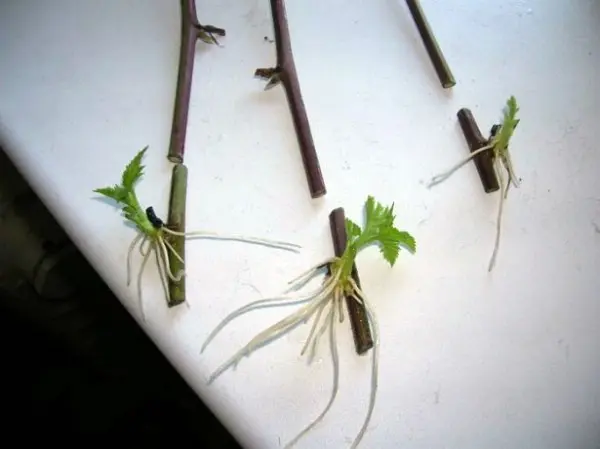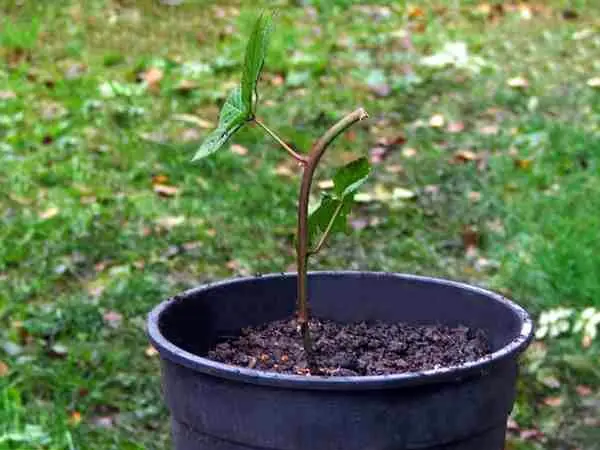Contents
A tasty and sweet berry, despite its close relationship with the raspberries we are used to, received a funny name, reminiscent of a small prickly animal – a blackberry. This probably happened due to the “sharp” nature of the bushes – the branches are abundantly covered with prickly thorns, which turn organized plantings of blackberries into a real hedge. And although this berry has long been in an undeserved second place after raspberries, today it confidently comes out on top. We will talk about how and when to plant blackberry bushes in this article.
Blackberry types
Without exception, blackberry varieties can be divided into three main types: kumanika (distinguished by upright stems), dewberry (with weaving branches) and semi-creeping intermediate species.

Kumanika is a plant with upright stems, which is characterized by reproduction by root sprouts. It is this group that includes most of the varieties that easily survive the winter, even if they are not covered. For example, one of the most resistant varieties is Flint, which can tolerate temperatures as low as -40 degrees.
Dewberries are characterized by creeping shoots, with large and juicy berries. These varieties can be propagated by cuttings or by rooting the tops. Garden blackberries of these varieties are more productive, but endure winter more difficult, they must be covered from frost.
If we talk about intermediate forms, then more than enough of them have recently appeared. They differ slightly in terms of fruiting, fruit shape, degree of resistance to pests and diseases.
And recently something new has appeared: blackberries without thorns are now available to gardeners. The berries on such plants are absolutely not inferior in taste and commercial qualities to their prickly counterparts, but the harvesting process is greatly simplified.

Preparing for planting
If you are going to plant blackberries in the fall, pay special attention to the development of the root system: the roots of the seedling should be well developed. It is also important to find out the characteristics of a particular variety in order to plant the crop correctly, observing the terms and conditions.
Of course, planting blackberry bushes in the fall suggests exclusively frost-resistant varieties – after all, the young plant will have to survive the cold winter.
You can plant bushes by choosing the right place: it should be well protected from the winds, have a sufficient level of lighting all winter and warm up well. Blackberry is a moisture-loving crop, it is also important to consider this before planting a bush in a chosen place.
Another important step in preparing for planting berries in the fall is the condition of the soil, because it is better not to replant the bush. The selected area must be completely free of weeds, loosening must be carried out correctly – carefully dig up the place where the planting is planned, to a depth of half a meter.

blackberry planting technology
In autumn, when blackberry bushes are planted for the winter, it is important to properly organize shelter for them: when the plant is planted, it must be covered with a 15-centimeter layer of peat or humus for the whole winter. But first, let’s talk about how to plant plants.
If you decide to propagate the blackberry not with cuttings, but with seedlings, then dig a large hole (about 0,5×0,5 m). When it is ready, you need to add about half a bucket of humus to it. Fertilizer must be thoroughly mixed with the top layer of the earth and placed in a prepared hole.
When you place the plant in the hole, deepen its root collar by about 3 cm. The roots must be carefully leveled to prevent creases. To plant a bush, it must be carefully covered with earth and the soil well compacted around the root.
When the planting process is over, the bushes should be watered abundantly (up to 1 bucket per bush) and thoroughly mulched with straw (2-3 cm layer). In this state, young bushes planted in autumn will survive the long winter without any problems.

If it is decided to plant a straight-growing berry in autumn, make holes at a distance of about a meter from each other, and leave 2 m between rows. Bushes of a creeping variety in autumn should be planted at a distance of at least 2 m, maintaining a row spacing of 2,5 m.
When choosing the right variety for your site, remember a few rules:
- Decide on the method of propagation of the bushes – cuttings or root processes, because sooner or later you will definitely want to transplant the old bush to a new place or propagate the plant. With cuttings, the situation is somewhat simpler, since some varieties of blackberries are very reluctant to form root shoots, while with cuttings you are not threatened with a lack of material.
- Pay attention to the frost resistance of the variety – not all bushes can easily survive our winter, many need protection from the cold.
- Study the ripening dates for the fruits of a particular variety so that the garden berry will please you as long as possible.
Take care of your garden with love and attention, and blackberry bushes will delight you with a rich harvest, giving you the opportunity to feast on fragrant and healthy berries all winter.
Video “How to plant a blackberry”
In this video, you will learn how to properly plant blackberries and prepare them for winter.









